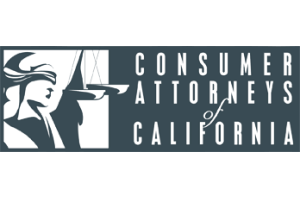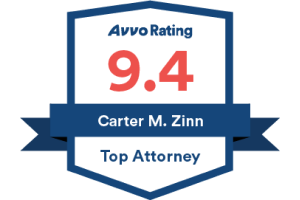- Free Consultation: 415-292-4100 Tap Here to Call Us
What are the Most Common Types of Bicycle Accidents?
Riding a bike shouldn’t feel like a gamble with your life. But thanks to distracted drivers, careless right turns, and doors flung open without warning, too many cyclists end up in hospitals instead of at their destinations.
These bicycle accidents aren’t random. A left-cross collision happens when a driver fails to yield. A right hook takes out a cyclist because someone couldn’t bother to check their mirror. Every accident has a cause, and more often than not, it’s negligence.
If a driver’s recklessness puts you in the hospital, you have the right to hold them accountable. The Zinn Law Firm fights for injured cyclists, securing compensation for medical bills, lost wages, and the toll these accidents take.
Call (415) 292-4100 today for a consultation.
The Left Cross
A driver pulls up to an intersection, glances left, then right. Their brain registers cars but filters out everything else. The light turns green, and they make a left turn—straight into a cyclist riding through the crosswalk or bike lane.
This isn’t bad luck. It’s inattentional blindness, the same cognitive failure that makes drivers miss motorcycles and pedestrians.
The law doesn’t care about their excuses. California Vehicle Code § 21801(a) requires drivers making a left turn to yield to oncoming traffic, including cyclists. Failing to do so makes them legally responsible for the crash.
Some insurance companies try to shift the blame. They claim the cyclist wasn’t visible, was riding too fast, or “came out of nowhere.”
Video footage, witness testimony, and crash reconstructions may tell a different story. A driver who doesn’t see a cyclist doesn’t erase the cyclist’s right to the road.
The Right Hook
A cyclist pedals steadily in the bike lane, keeping pace with traffic. Up ahead, a driver in the right lane flicks on their turn signal—if they bother at all—and swings right. The cyclist has nowhere to go. Brakes screech. Metal crunches. Bodies hit the pavement.
California law doesn’t leave room for this kind of carelessness. Vehicle Code § 21717 requires drivers to merge into a bike lane before making a right turn, yielding to any cyclists already there.
That extra step keeps everyone upright. Skipping it turns a routine turn into a side-impact collision.
Some drivers try to claim they didn’t see the cyclist.
That defense falls apart fast. A bike lane isn’t an invisibility cloak. Failing to check mirrors or blind spots before turning isn’t an accident—it’s negligence. And the law treats it that way.
Dooring
The right hook takes cyclists out at intersections. Dooring gets them anywhere cars park.
A cyclist rides along a row of parked cars, keeping pace with traffic. A driver, fresh from scrolling their phone, flings their door open without looking. The cyclist has two choices—slam into the door or swerve into moving traffic. Neither ends well.
California Vehicle Code § 22517 makes it illegal to open a car door unless it’s safe to do so. That law exists because of crashes like these. A dooring accident throws a cyclist headfirst over handlebars, straight into asphalt. Head injuries. Broken bones. Worse.
Some drivers claim they didn’t see the cyclist. Some act surprised that dooring is illegal. Neither changes the fact that a moment of carelessness sends cyclists to the hospital. The law doesn’t care about excuses. It cares about who’s at fault.
Overtaking Misjudgments
Dooring happens at low speeds, but misjudged passes turn roads into high-speed gauntlets.
A driver speeds up to overtake a cyclist but doesn’t leave enough space. The side mirror clips a handlebar. The cyclist wobbles, crashes, or gets forced off the road entirely. Sometimes, a driver underestimates the draft of their own vehicle, creating a vacuum that sucks the cyclist dangerously close.
California law isn’t vague about this. Vehicle Code § 21760, also called the Three Feet for Safety Act, requires drivers to give cyclists at least three feet of clearance when passing. If that’s not possible, they must slow to a safe speed and wait. Most don’t.
Some drivers try to squeeze by, assuming the cyclist will adjust. Some don’t even notice they’ve caused a crash. A honk, a close pass, and they’re gone—meanwhile, the cyclist hits the pavement or worse, ends up under the wheels of another car.
Rear-End Collisions
A close pass leaves cyclists rattled, but a rear-end crash doesn’t leave them time to react.
A driver stares at their phone, fiddles with the radio, or daydreams at the wheel. Up ahead, a cyclist rides predictably in the lane or a bike path. The driver doesn’t notice until it’s too late. The impact launches the cyclist forward, sometimes straight into traffic.
California Vehicle Code § 21703 requires drivers to maintain a safe following distance, but some treat cyclists like moving targets instead of people. A two-ton vehicle doesn’t stop on a dime, and a helmet doesn’t make up for a driver’s laziness.
Insurance companies scramble to shift blame. They claim the cyclist swerved, stopped abruptly, or wasn’t visible. But rear-end collisions almost always point to driver negligence. If someone rams into another vehicle at a stoplight, no one blames the car that got hit. The same rules apply to bikes.
Environmental Hazards
Some hazards don’t care where cyclists ride.
A pothole the size of a crater waits in the bike lane. A metal grate, slick with rain, turns into an ice rink. A construction zone forces cyclists into traffic with no warning. Bad infrastructure and poor maintenance create crash sites before a single car or cyclist enters the picture.
California law holds cities and property owners accountable for keeping roads safe. Government Code § 835 states that a public entity is liable if it knew—or should have known—about a dangerous condition and failed to fix it.
That applies to bike lanes, road shoulders, and intersections.
Private property owners face similar liability under premises liability laws if their negligence leads to an accident.
Some cities claim ignorance. Some shift blame to the cyclist. Neither changes the fact that a missing sign, a neglected pothole, or a sudden road closure can send a cyclist flying.
Mechanical Failures
A pothole waits passively. A faulty bike part turns against the rider.
A brake cable snaps mid-descent. A carbon fork gives way under pressure. A quick-release skewer, poorly installed or defective from the start, pops open at the worst possible moment.
Cyclists trust their equipment to hold up under stress. When it fails, the crash isn’t a matter of bad luck—it’s a ticking time bomb that finally went off.
Manufacturers, bike shops, and repair technicians all have legal responsibilities.
Under California’s product liability laws, companies that design, produce, or sell defective products are strictly liable if those defects cause injury. That includes bikes, helmets, and every component in between.
A shop that assembles a bike improperly or fails to spot a manufacturing defect can also face negligence claims.
Some failures show warning signs—loose bolts, grinding gears, hairline cracks in the frame. Others don’t.
Either way, when a cyclist gets thrown because of a bad part or botched repair, the fault doesn’t land on them. It lands on whoever put them on a bike that was never safe to ride.
Hit and Run
A mechanical failure leaves cyclists feeling betrayed. A hit-and-run leaves them abandoned.
A driver plows into a cyclist and keeps going. Maybe they panic. Maybe they assume no one saw. Maybe they think a bike doesn’t count as real traffic. None of that matters.
California Vehicle Code § 20001 makes leaving the scene of an injury crash a felony. A driver who runs isn’t just reckless—they’re a criminal.
Some hit-and-run drivers turn themselves in. Most don’t. That’s where surveillance footage, witness statements, and traffic camera data come in. California also allows uninsured motorist coverage to compensate cyclists in these cases.
Cyclist Error
A rider misjudges a turn and wipes out. A patch of loose gravel sends them sliding. A moment of distraction turns into a curb strike, a tumble, or worse. Not every bike crash involves a reckless driver, a crumbling road, or a faulty part. Sometimes, the mistake belongs to the person on the bike.
But before assuming blame, stop talking and call a lawyer. California follows a pure comparative negligence rule (Civil Code § 1714), which means even if a cyclist shares fault, they can still recover damages—just reduced by their percentage of fault.
A rider who took a turn too fast might hold some responsibility, but if a driver also broke a traffic law, liability doesn’t disappear. Insurance companies will pounce on any admission of guilt to slash or deny compensation. Let your attorney handle the conversation.
What to Do After a Bicycle Accident
What happens next—what gets documented, who gets contacted, what gets said or left unsaid—determines whether a cyclist gets fair compensation or gets blamed for their own injuries.
The legal system needs proof. It needs records. It needs airtight claims that leave insurance adjusters with nowhere to run.
That process starts the second after impact.
Gathering Evidence
Reality shifts fast after a crash. The driver might look apologetic at first—until they start worrying about their insurance rates. Witnesses disappear. Skid marks fade.
That’s why you need a lawyer to lock down evidence immediately.
- Take photos – Capture everything. The bike. The car. The license plate. The exact position of the crash before anything moves. Document street signs, road conditions, and any traffic signals in the area.
- Get witness statements – Bystanders leave quickly, but their words can decide a case. If anyone saw what happened, ask for their name, number, and a quick summary of what they saw. A witness is insurance against the driver changing their story.
- Exchange information – The driver is legally required to provide their name, contact details, insurance provider, and license plate number. If they refuse, don’t argue. Let the police handle it.
- Look for surveillance cameras – A traffic light, a storefront security camera, a dashboard cam—any of these might have caught the crash. Video footage is harder to dispute than memory. If you see a nearby camera, make a note and ask your lawyer to request the footage before it overwrites itself.
Medical and Legal Steps
Pain doesn’t always show up immediately.
Adrenaline does a great job masking injuries, so cyclists may walk away from crashes thinking they’re fine—until they aren’t.
- Seek medical attention immediately – Even if nothing feels broken, a doctor should document injuries as soon as possible. Concussions, soft tissue damage, and internal injuries don’t always make themselves known right away, and insurance companies love to use delayed treatment against claimants. A same-day medical report cuts off that argument.
- Preserve evidence – Don’t fix the bike. Don’t wash the clothes. Don’t touch the helmet. Every dent, tear, and scrape is part of the crash record. Insurance companies argue about speed, force, and impact angles—an undisturbed bike tells that story better than words.
- Do not speak to insurance adjusters – Their job isn’t to help. It’s to pay as little as possible. They will use anything said to them to lower a settlement offer. The less said, the better.
- Do not admit fault—even casually – Saying “I didn’t see them” or “I should have been more careful” gives insurance companies ammunition to assign blame. Liability isn’t always clear at the scene, and offhand comments can be twisted to reduce a payout. Let a lawyer decide what to say and when.
- Contact a lawyer before making any statements – Like we mentioned before, California follows a pure comparative negligence rule, meaning even if a cyclist holds some fault, they still can recover compensation. A lawyer ensures that the insurance company doesn’t get away with lowballing a claim by incorrectly assigning liability.
Call Zinn Law
Insurance companies won’t fight for you. The legal system won’t make itself fair. That’s where we come in.
The Zinn Law Firm has taken on reckless drivers and stingy insurers for years, securing real compensation for injured cyclists.
Call (415) 292-4100 today, and let’s get to work.





